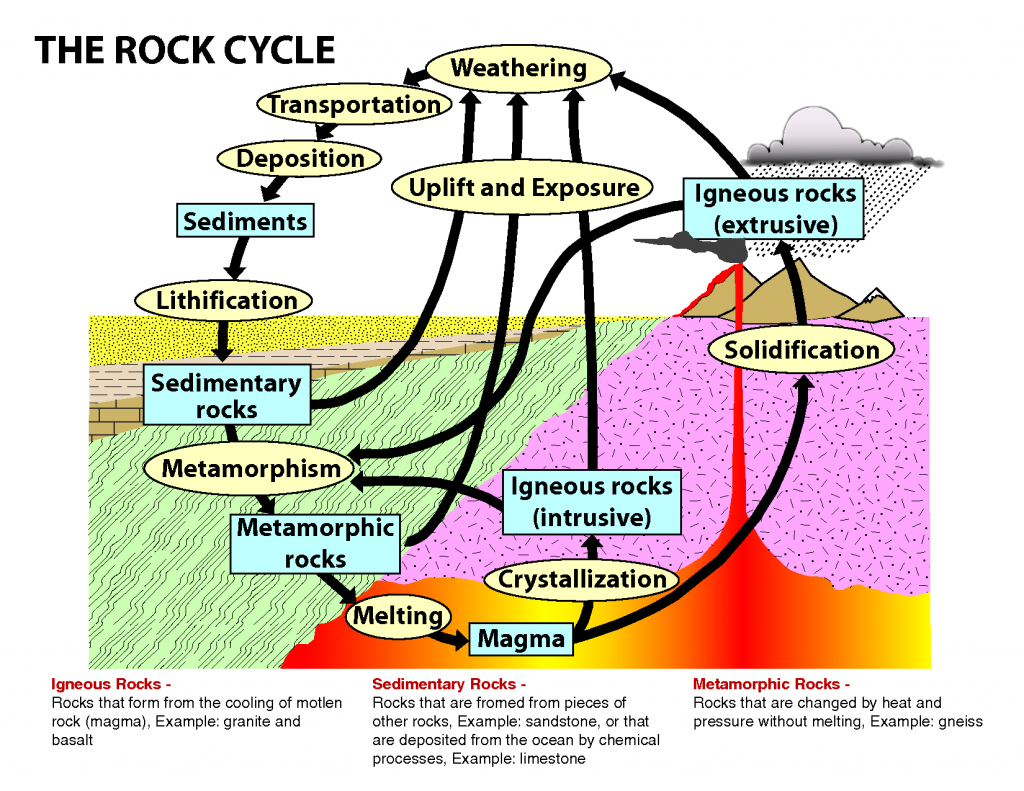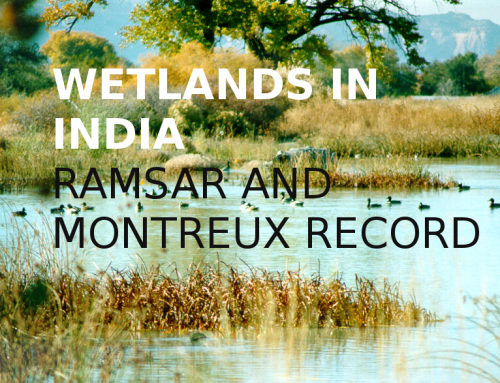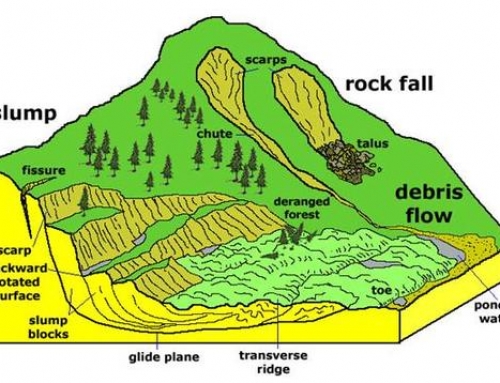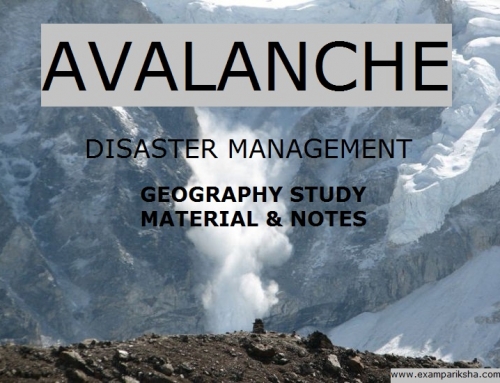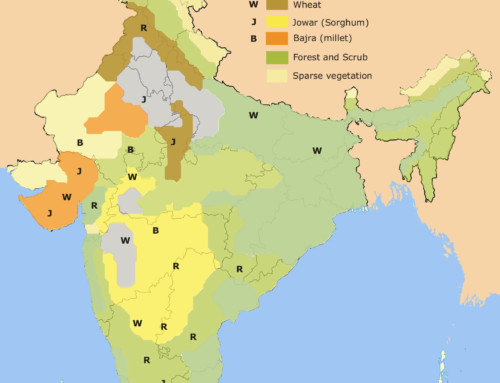Earth’s crust is composed of rocks. Its an aggregate of one or more minerals. Rocks do not have definite composition of mineral constituents. However, feldspar and quartz are the most common minerals found in rocks.Petrology is science of rocks. It is a branch of geology. A petrologist studies rocks in all aspects – composition, texture, structure , origin, occurrence, alternation and relationship with other rocks.
Based on their mode of formation, there are three different types of rocks:
- Igneous rocks – solidifies from magma and lava.
- Sedimentary rocks – the result of deposition of fragments of rocks by exogenous processes.
- Metamorphic rocks – formed out of existing rocks undergoing recrystallization.

Igneous rocks:
- Formed from magma and lava from interior of earth.
- These are primary rocks.
- Igneous rocks are classified based on texture. Texture depends upon size and arrangement of grains or other physical conditions of the materials.
- If the molten material or magma is cooled slowly at great depths, mineral grains may be very large.
- Sudden cooling (at the surface) results in small and smooth grains.
- Intermediate conditions for cooling of magma would result in intermediate sizes of grains.
- Granite , gabbro, pegmetite, basalt, volcanic breccia, and tuff are some examples.
Sedimentary rocks:
- All rocks of earth are exposed to actions of denudational agents and are broken in various sizes of fragments. Such fragments are transported by different exogenous agencies and deposited.
- These deposits through compaction turn into rocks. This process is called “Lithification“. This is the process of formation of sedimentary rocks.
- Some retain their characteristics even after Lithification like sandstone, shale, etc. Therefore, we can see various layers of different thickness in these sedimentary rocks.
- Depending on mode of formation,classified into following three –
- Mechanically formed – Sandstone, conglomerate, limestone, shale, loess.
- Organically formed – Geyserite, chalk, limestone, coal, etc.
- Chemically formed – Chert, limestone, halite, potash, etc.
Metamorphic rocks:
- The word metamorphic means ‘ change of form’. these rocks form under action of Pressure, Volume, temperature changes.
- This occurs when rocks are forced down to lower levels by tectonic processes, or when molten magma rising through crust comes in contact with crustal rocks, or when underlying rocks are subjected to great pressure by overlying rocks.
- It is a process by which already consolidated and compacted rocks undergo recrystallisation and reorganization of materials within original rocks.
- Dynamic metamorphism: mechanical disruption due to breaking without any appreciable chemical changes.
- Thermal metamorphism: chemical alteration and recrystallisation of rocks. It is of two types: A) Contact – rocks come in contact with hot intruding magma and rocks recrystallize under high temperature. ; B) Regional – recrystallization of rocks due to deformation caused by tectonic shearing together with high temperature or pressure or both.
- Foliation or lineation : During recrystallisation, minerals might get arranged in layers or lines, this is termed as foliation.
- Banding: When minerals and materials of different groups are arranged into alternating thin to thick layers appearing in light and dark shades, they are called structures with banding, and rocks displaying banding are obviously called banded rocks.
- Metamorphic rocks are divided in to two major groups – foliated rocks and non foliated rocks.
- Examples of metamorphic rocks are – gnessoid, granite, syenite, slate, schist, marble, quartzite.
Rock Cycle
It is a continuous process of transformation of old rocks into new ones. Rock cycle is better understood by the diagram. Igneous rocks are primary rocks.
Other rocks are derived from igneous rocks. And the original source of igneous rocks is magma.

